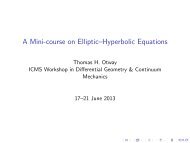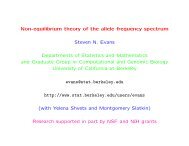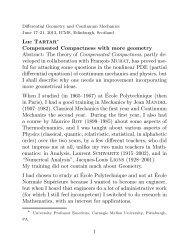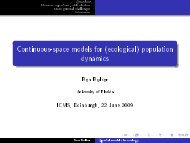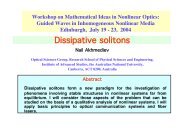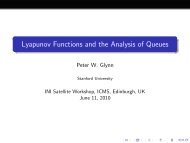1. Introduction We are going to investigate the equation ut(t, x ... - ICMS
1. Introduction We are going to investigate the equation ut(t, x ... - ICMS
1. Introduction We are going to investigate the equation ut(t, x ... - ICMS
- No tags were found...
Create successful ePaper yourself
Turn your PDF publications into a flip-book with our unique Google optimized e-Paper software.
12by using self similarity. In almost <strong>the</strong> same form as stated this lemma is proved inAppendix in [11].In <strong>the</strong> next lemma we do <strong>the</strong> first step <strong>to</strong> considering <strong>the</strong> power of summability in tequal <strong>to</strong> multiples of p.Lemma 2.6. Let T ≤∞, p ∈ (1, ∞), n =1, 2, .... For k =1, ..., n, let u k∈H 2,pp (T ) be sol<strong>ut</strong>ions of <strong>the</strong> <strong>equation</strong>u k t = aij u k x i x j + f kwith zero initial data and with f k ∈ L p p (T ). Then∫ T0n∏||∆u k (t)|| p L pdt ≤ Nk=1n∑∫ Tk=10∏||f k (t)|| p L p||∆u j (t)|| p L pdt, (2.4)j≠kwhere N = N(n, d, p, δ).Proof. Define v k =∆u k .ForX =(x 1 , ..., x n ) ∈ R nd with x i ∈ R d ,defineV (t, X) =v 1 (t, x 1 ) · ... · v n (t, x n ).Observe thatV t (t, X) =LV (t, X)+F (t, X),




